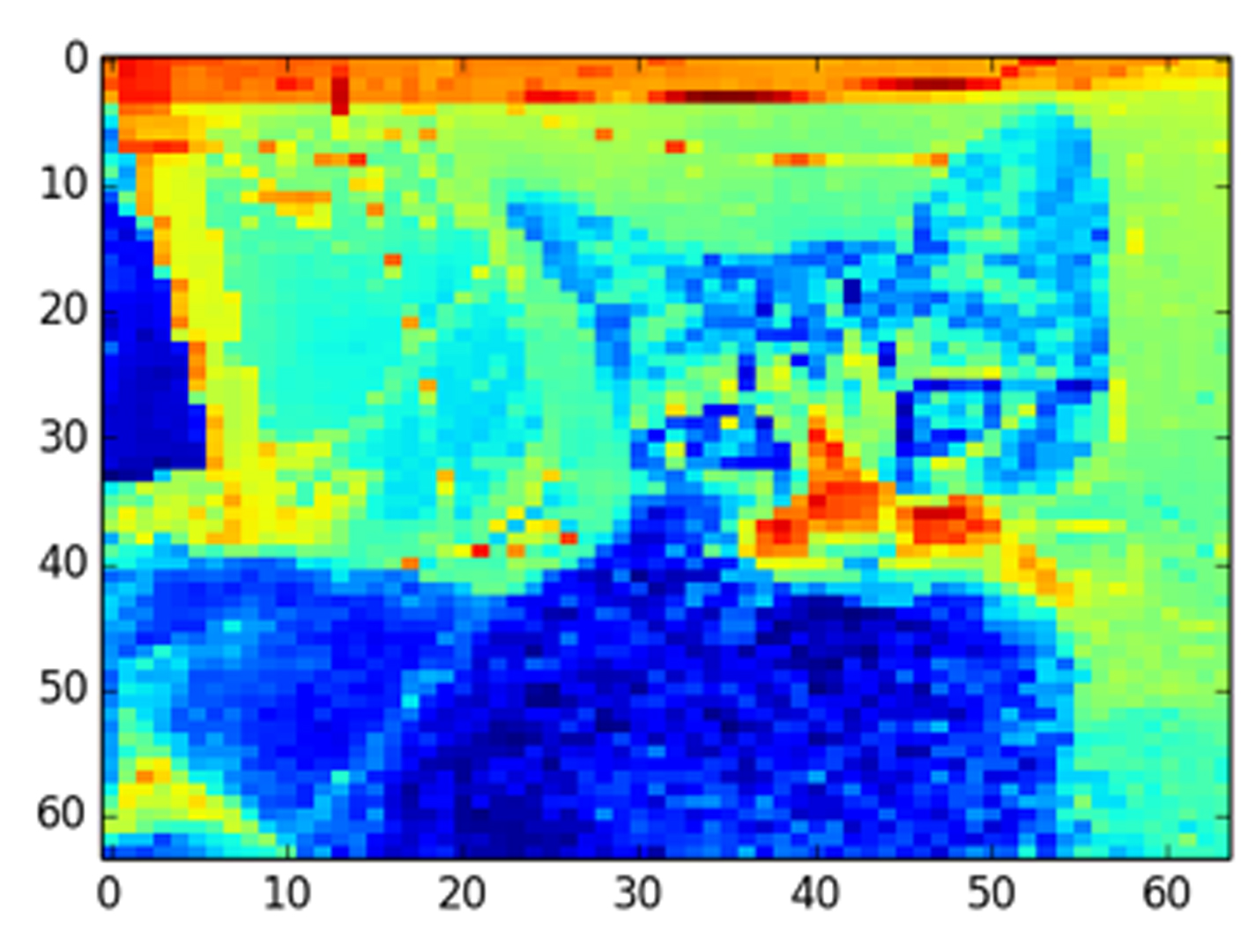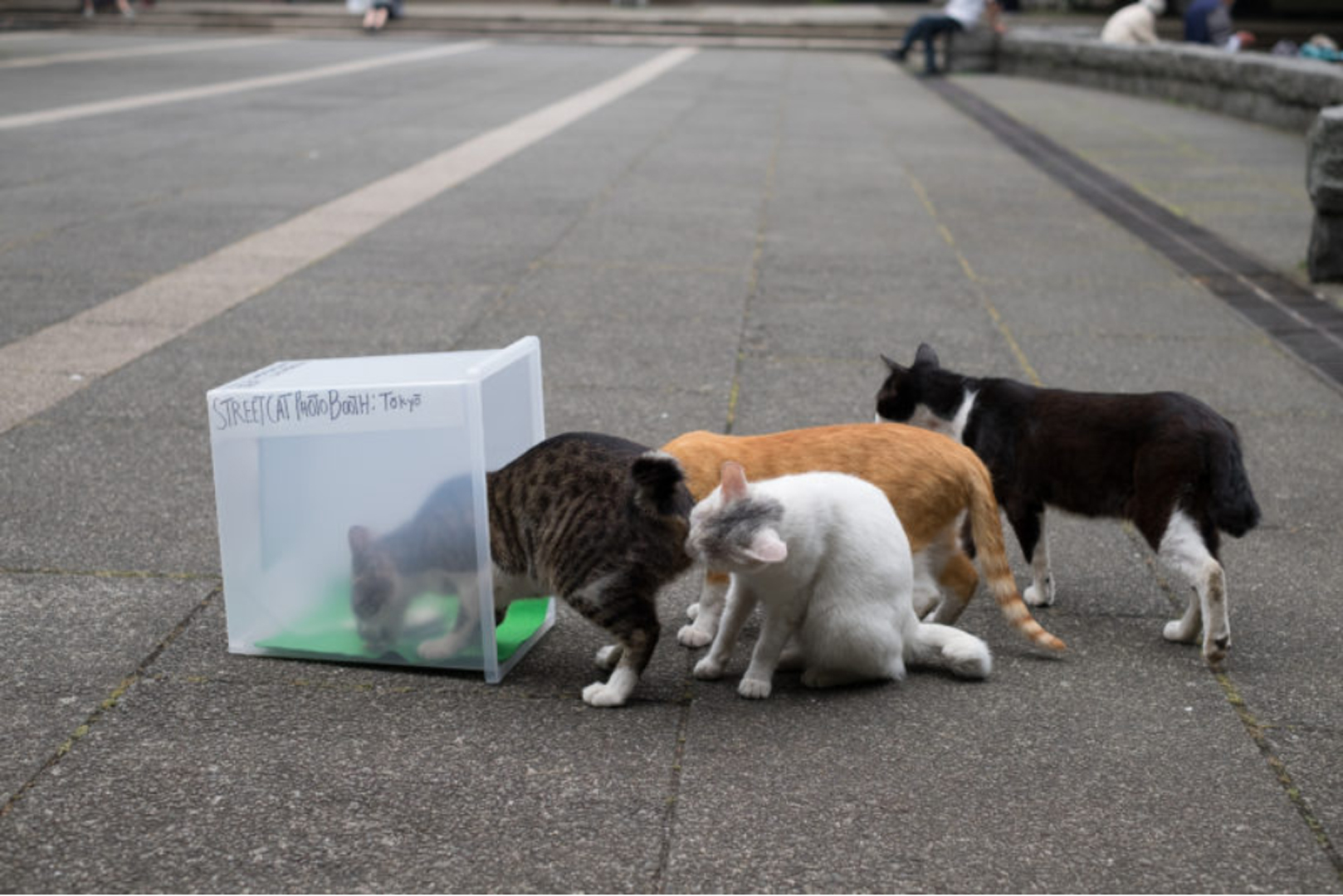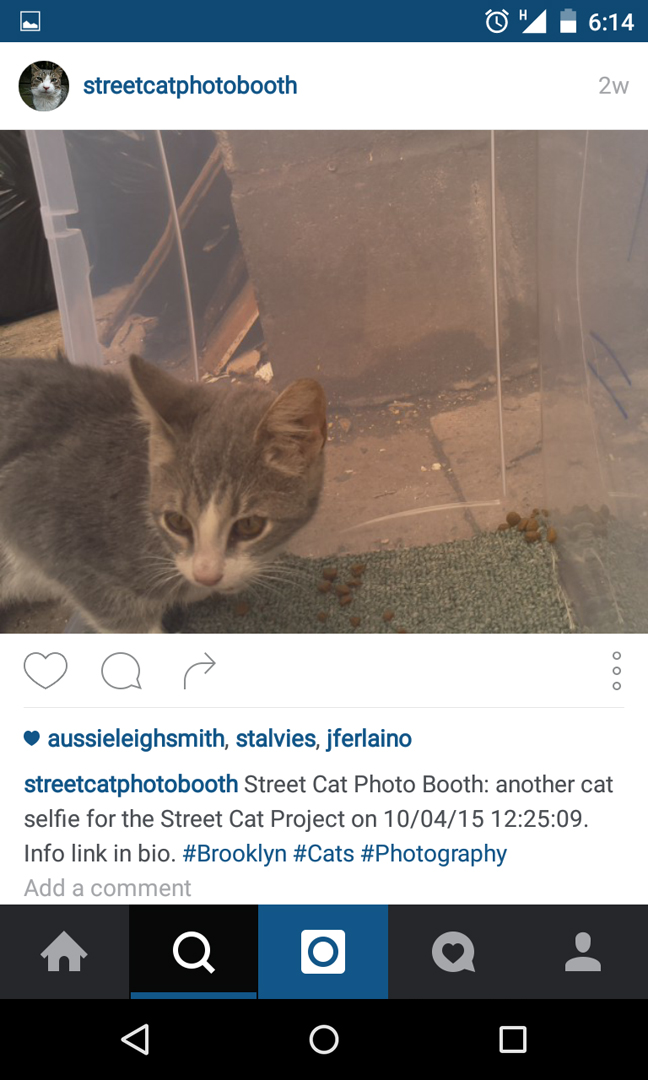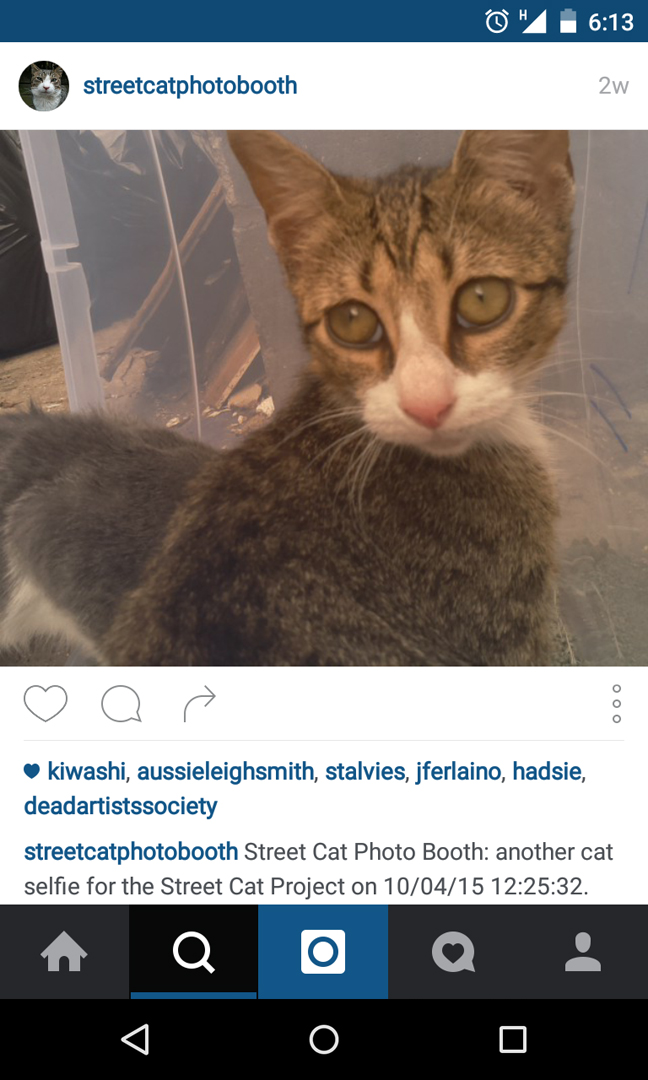Street Cat Photo Booth
Session Title:
Presentation Title:
Presenter(s):
Abstract:
Concept: Machine Learning, Disembodied Practice, and Curious Cats
Metacreation has been a critical component in the development of art work that seeks to bypass the limitations of the artist in the art-making process. This can be seen in the early work of Jean Tinguely’s deconstructing sculptural machines [1], Stanley Lunetta’s Moosack Machine audio sculpture [2], Nam June Paik’s video sculptures [3] and most recently, the MuseBot automated composition agents [4]. Street Cat Photo Booth is a multimedia artwork providing feline-scale shelter and food for local urban cats 1). The work is an extension of the Street Cat Project, an ongoing photographic work by Yerman [5,6,7].
Begun in 2011, that project consists of documenting the behavior and roles of feral and semi-feral cats as they survive and interact in multiple urban environments. The Street Cat Project has generated more than 5000 images of different street cats in Vancouver, New York, Tokyo, Osaka, Tel Aviv, and Reykjavik. Through the viewer’s engagement with images of an animal that is displaced from its common role as domesticated pet, the viewer has the opportunity to reflect on the ascribed value of animals by human societies. This forms a basis to examine the capricious and seemingly-inconsistent worth placed on certain animals, and by extension, the worth placed on human beings; particularly those of marginalised communities. Viewers are drawn towards the natural attractiveness of the cats, while being confronted with the harsh environments in which these animals must survive, as well as the inherent danger and health impacts of the cats’ scavenging existence.
Street Cat Photo Booth is a collaborative project that seeks to systematize, automate, and multiply the access of the Street Cat Project. Besides temporary protection from weather, food, and a comfortable surface on which to rest; Street Cat Photo Booth also contains an Internet-connected digital camera, proximity sensor, and image processing server. The art-making relationship becomes one of cat, hardware, and network; offsetting the human photographer and manifesting itself into digital space. The embodied practice of street cat photography always risks alienating or frightening the animal: automation allows the cat an environment devoid of human-generated noise, appearance, or odors. The photo booth is conceived as a device to achieve a shorter subject distance, entice cat engagement, and to reflect on the aesthetic choices exercised by the photographer in the selection of images for display. Street Cat Photo Booth will actualize on the streets of Hong Kong: human observers will witness street cats initiating their own photo shoots. The audience can then playfully question the role of art creator, agency of animal subjects, authorship; and more broadly, the worth of marginalized and itinerant scavenger communities existing within urban environments––both animal, and, by reflection, human.
While automated web cameras are commonplace in surveillance 2) or animal observation 3), they are not typically designed for creative applications. In particular, simply producing a stream of images is problematic in that it requires the viewer to search through potentially many images in order to find pictures of street cats that show the character of the animal and environment, and that are visually appealing. Without the critical component of image choice by the photographer, a key aesthetic element of the photographic project would be lost in the automation of the photo booth. To address this, a machine learning algorithm is employed to decide when the automated camera has taken a portrait of a cat that would be deemed interesting. By training this image selector on a library of photographs drawn from the existing collection of the Street Cat Project, only images worthy of public interest are selected to be uploaded and shared on social media. We have termed this approach “preemptive curation”.
1) instagram.com/streetcatphotobooth
2) For example, the Canary personal surveillance system canary.is.
3) For example, the Feeder Tweeter automated bird feeder and camera http://www.feedertweeter.net/ was a technical model.









